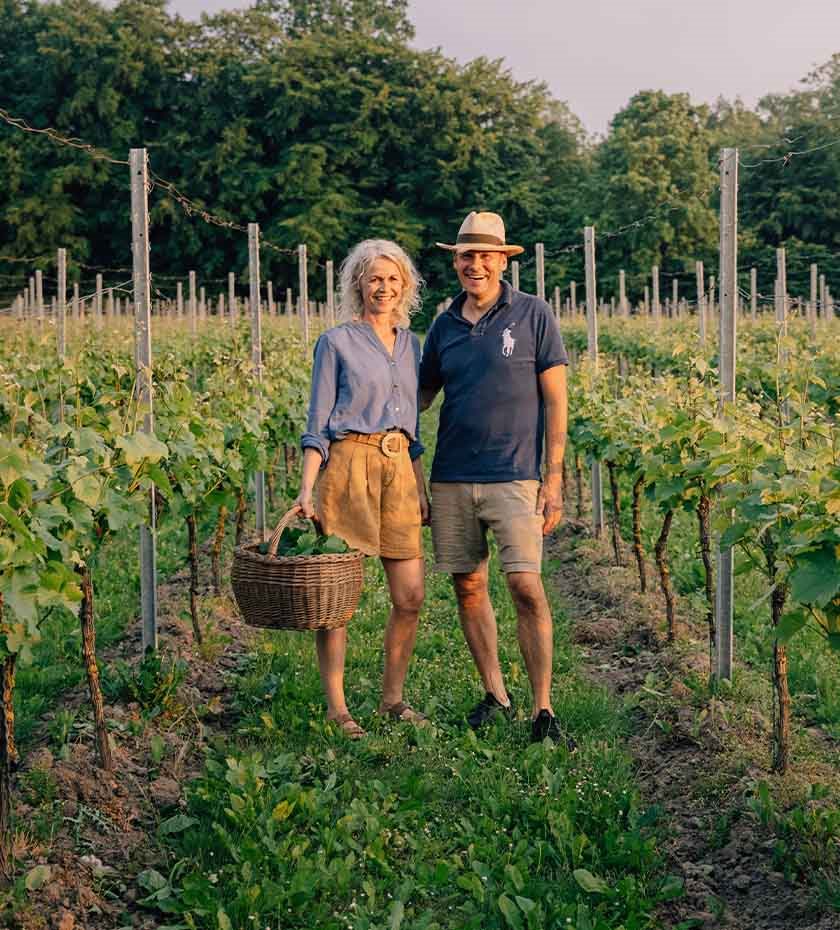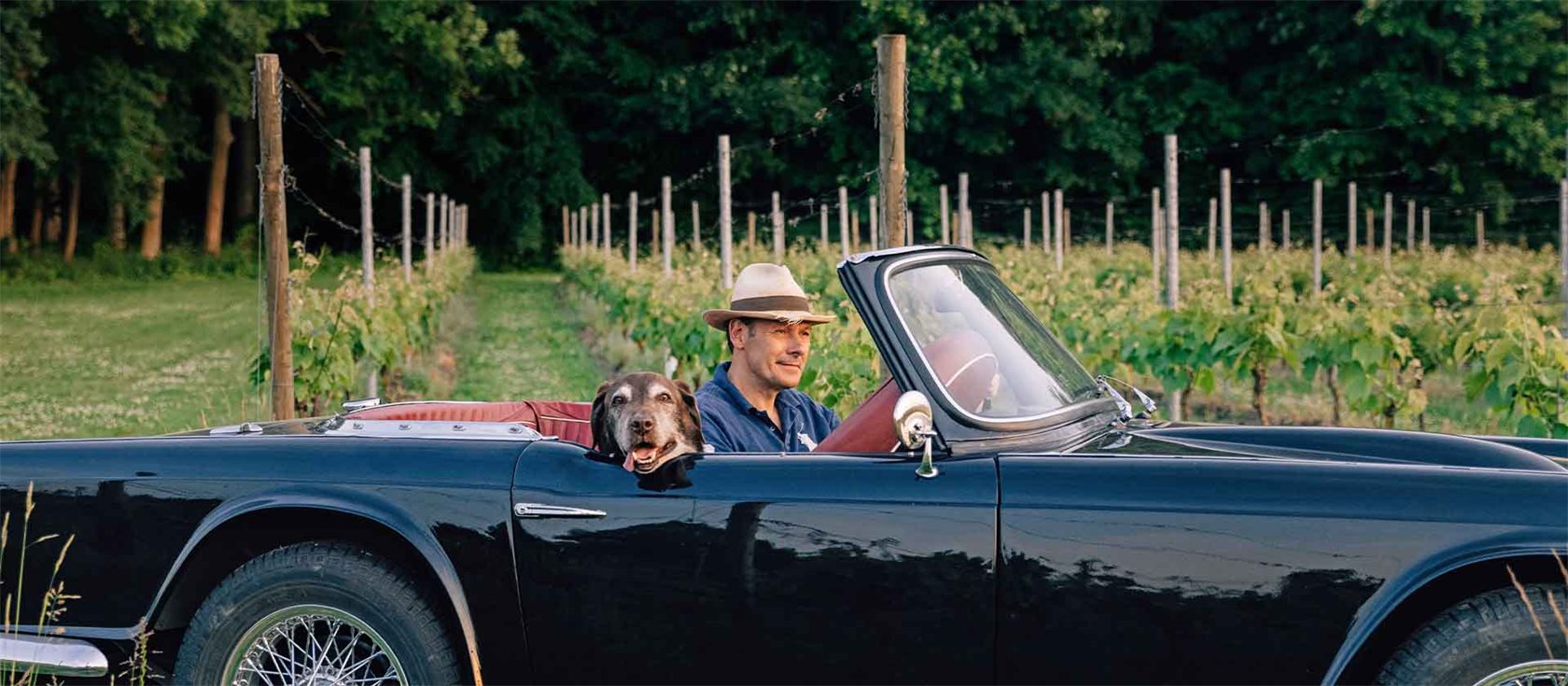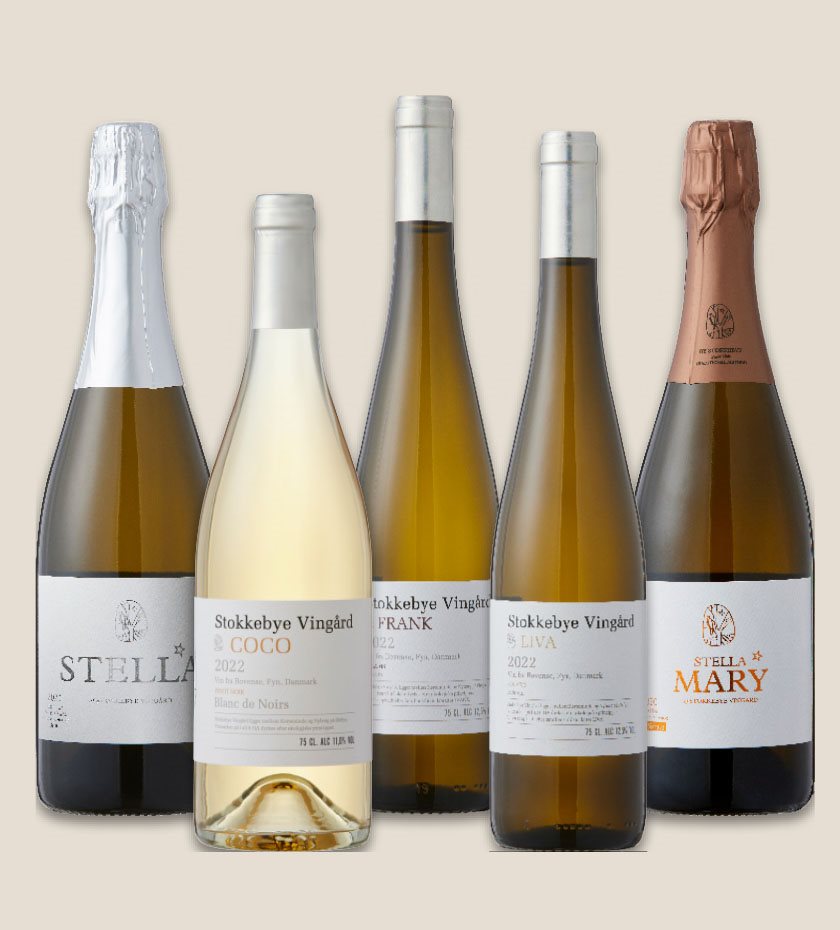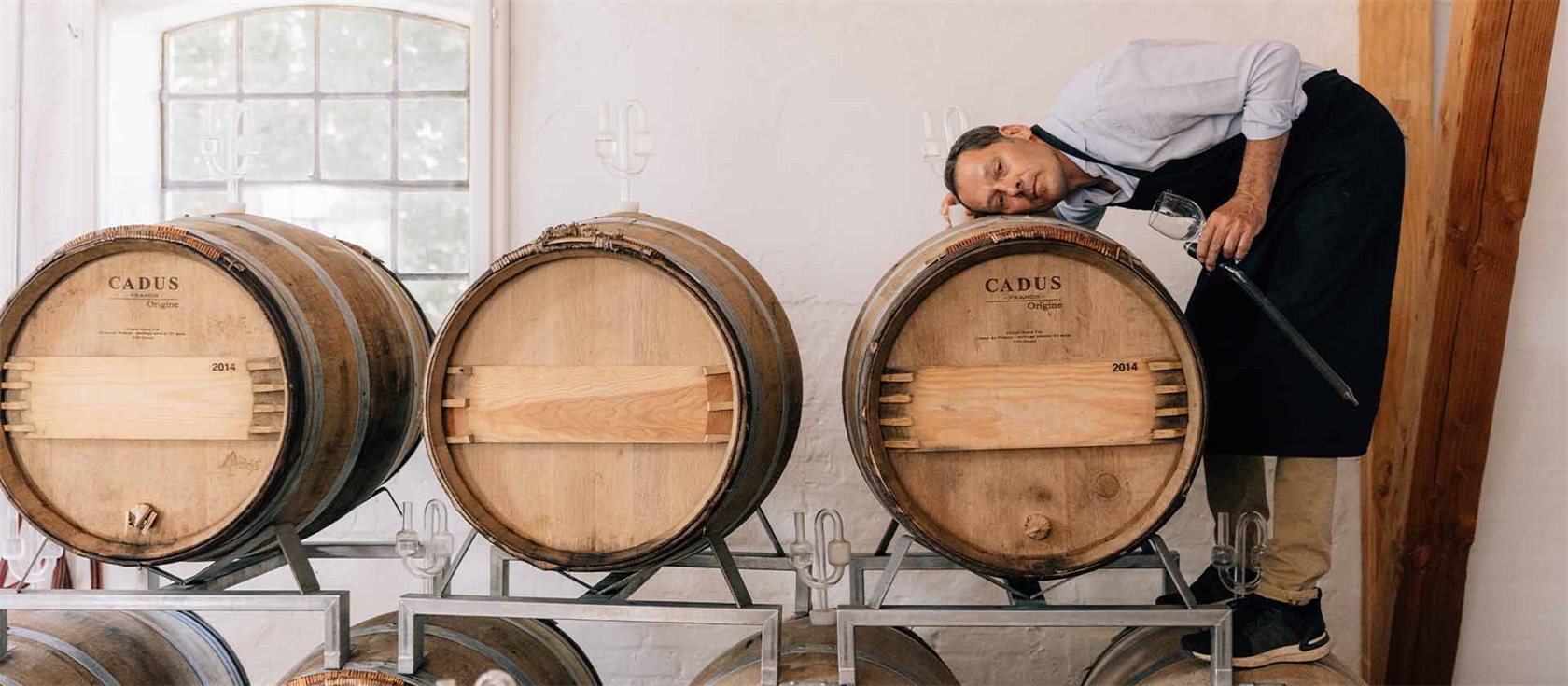Sparkling wines & delicate caviar from a small Danish village

Danish wine? A thin imitation of the noble drops that French, Spanish and Italian winemakers have enriched our lives with? Absolutely not! Whether it's due to global warming or skill, Danish wine now have a say in the game.
One thing is certain: today, there is no reason to sneer at the achievements of Danish winemakers over the past five to ten years. Especially if you visit Stokkebye Vingård in the small village of Bovense on Funen. Here, Helle and Jacob Stokkebye have created the foundation for a Danish wine adventure. It all started in 2009 with 1,000 plants planted in the garden. Nine different varieties were planted as an experiment to find the ones best suited to the Danish climate. Today, 15 years later, they harvest grapes from more than 17,000 vines.
And while Danish wine used to have a somewhat tarnished reputation, Helle and Jacob Stokkebye have managed to create wines of such high quality that they now sell their wines to Michelin-starred restaurants such as Geranium, Alchemist and Aro. They have also expanded their market to include Norway and Sweden. Yes, even a Michelin-starred restaurant in Paris has their wines on its wine list.

A boyhood dream
It's a bit of a boyhood dream come true. Well, maybe a youthful dream. At the age of 24, Jacob Stokkebye worked at a number of Michelin-starred restaurants in France as part of his sommelier training. Especially in the Bordeaux region.
"I set out to taste all 60 Bordeaux wines classified according to the rules from 1855. I got around by bicycle. So, I rolled out to the different chateaus and tasted their wines. And then I would meander home in the evening," he says.
One place in particular taught him a lot about creating great wines. It was at Domaine de Chevalier in the Graves region - one of Bordeaux's finest wine regions on the left bank of the Garonne River.
"At Domaine de Chevalier, the Bernard family took me under their expert guidance and taught me everything from the harvest to the vinification itself. It's a prestigious domaine that produces some of Bordeaux's top white wines. It's developed into a friendship and a really good collaboration that involves us buying used barrels that their white wine has sat in for two years."
And the knowledge he gained, especially about the production of top white wines, served him well when he returned home to Denmark. But not right away.

"I worked for a number of years as restaurant manager and co-director at the inn Falsled Kro during the years when the French master chef Jean-Louis Lieffroy was in the kitchen. When I left, I decided to try something new. And why not live my boyhood dream and see if it was possible to grow quality wine here in Denmark?"
In 2009, Jacob and his wife Helle planted the first vines in their backyard in the small town of Bovense. Perfectly located close to the sea - and not least with ideal soil for viticulture.
"The soil is the most important parameter in relation to viticulture. The grape variety is of course important. Not least here in Denmark, where we have a shorter ripening season and a generally cooler climate. But it's the soil that determines how good a wine you can make. And here we were lucky! Our soil consists of a clay layer about 30 centimeters deep and a solid limestone base. It's simply optimal. But it was pure luck. Because I've never had the patience to wait for soil tests and the like. So that's something we only found out later."

Over the years, Jacob Stokkebye has also managed to attract international consultants. They have given him new and necessary knowledge to be able to create wines that Danish Michelin-starred restaurants want on their wine lists. Today, he has a collaboration with a well-known French champagne house. This is not irrelevant as Stokkebye Vineyard's main production is sparkling wine made according to the traditional Métode Champenoise.
The task has been to find new grape varieties that could deliver a good harvest yield with good flavor and acidity.
"We have planted some of our fields with Solaris grapes, which are very well suited to our climate. It's this grape variety that makes foreign countries look at Danish wine production with great interest and recognition. But we have primarily chosen to grow a notoriously difficult grape variety, Pinot Noir. Admittedly a German clone that is suited to our climate and is more resistant to fungal infections."
Despite the fact that Pinot Noir is perhaps the riskiest grape variety to take on, Jacob Stokkebye has managed to achieve great results. "Since 2017, when we started harvesting Pinot Noir, we haven't had a bad year. Of course, there has been a difference in the harvest yield," says Jacob Stokkebye and explains that within a few years, production will reach around 12-15,000 bottles annually of Stokkebye Vineyard's sparkling wines.
Climate or skill
The fact is that the first Danish winegrowers who embarked on the difficult art of growing and making enough wine were recognized for the attempt in itself. But the first results were by no means worth mentioning.
"To be truthful, the first Danish wines tasted simply awful. Most of them were produced by people beyond their fifties. They focused on red wine and a grape variety called Rondo. It was not a very good mix. The Rondo grape might work when you blend a wine with other grapes. But in my world, it's no good on its own."
Since then, the Danish winemakers have become more skilled. And especially the switch to grape varieties like Solaris has meant that foreign countries look with appreciation at the results of Danish winemakers.
Though surprisingly enough, Jacob Stokkebye does not believe that climate change has yet created better conditions for Danish wine production.
"Of course it has gotten a little warmer. At least in the statistics. But we are experiencing challenges. Take last year, for example, when we experienced 27 days in June without a drop of rain. Then came the wettest July in living memory. But fortunately, we were saved by a dry and warm September," says Jacob Stokkebye and continues:
"In January I was in Bordeaux. The temperature was 15 degrees, while it snowed in Paris with a temperature right around freezing. A few days later it also snowed in Bordeaux and the temperature dropped to zero degrees. This kind of weather is a challenge in both France and Denmark."
Skill definitely plays a role for Danish winemakers who manage to create fine wines. As does the climate. So far, Jacob Stokkebye has learned so much about wine and vinification that his wines have found their way into some of the country's best restaurants. Stokkebye Winery produces especially fine sparkling wines that have achieved great recognition abroad. Fine wines that are ideal for accompanying a spoonful of caviar. A passion that Jacob Stokkebye has cultivated for almost 30 years as an importer of the finest caviar from the Caspian Sea.
But that's a whole other story. Even if the combination is enchanting.